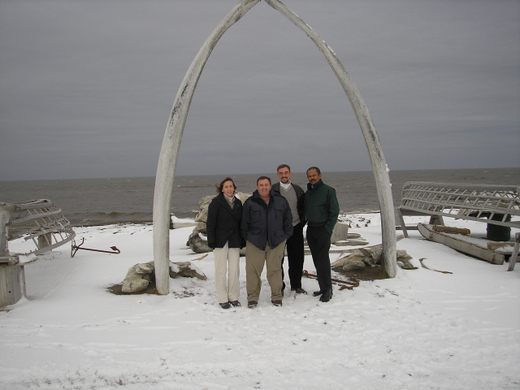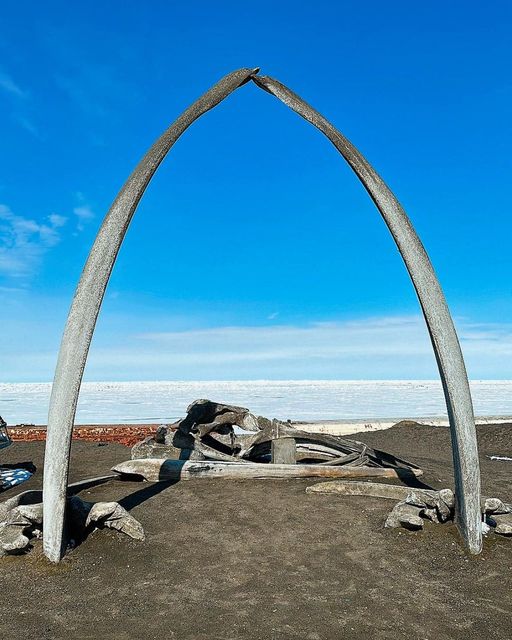Whale Bone Arch in Utqiagvik, Alaska
In the remote town of Utqiagvik, Alaska, perched on the northernmost tip of the state, stands a remarkable structure that represents a deep connection to the rich cultural heritage of the Iñupiat people. Known as the Whale Bone Arch, this iconic monument stands as a symbol of tradition, resilience, and the deep bond between the community and the Arctic environment.
Utqiagvik, formerly known as Barrow, is home to the Iñupiat, an indigenous community with a history that spans thousands of years. Whaling has been a significant part of their subsistence lifestyle and cultural identity, providing sustenance, materials, and spiritual significance. The Whale Bone Arch pays homage to this important relationship between the Iñupiat and the majestic creatures of the Arctic waters.
The arch itself is made up of massive whale bones, primarily from bowhead whales. These bones, obtained through traditional hunting practices, are carefully arranged to form a towering structure that stands as a testament to the strength and resilience of the Iñupiat people. The arch serves as a visual reminder of their ancestral traditions and the ongoing connection to the natural world.
Whale bone arches are not unique to Utqiagvik, but this particular arch holds special significance. It stands prominently at the entrance to the town, welcoming visitors and serving as a powerful symbol of cultural pride. The arch has become a recognizable landmark, attracting tourists and researchers from around the world who come to learn about the Iñupiat way of life and the importance of whaling in the Arctic region.
Beyond its cultural significance, the Whale Bone Arch also highlights the Iñupiat’s commitment to environmental stewardship. The community has long embraced sustainable whaling practices, recognizing the need to protect and preserve the delicate balance of the Arctic ecosystem. They adhere to strict regulations and collaborate with scientists to ensure the long-term viability of whale populations while preserving their cultural heritage.
The arch itself is a testament to resourcefulness and creativity. The bones, once essential tools for survival, are repurposed into a striking monument that stands in harmony with the surrounding landscape. This adaptive reuse represents the Iñupiat’s ability to adapt to changing times while maintaining a strong connection to their roots.
Moreover, the Whale Bone Arch serves as a gathering place for community events and celebrations. It is a site where stories are shared, dances are performed, and cultural events take place, strengthening the sense of community and honoring the legacy of the Iñupiat people.
The Whale Bone Arch in Utqiagvik, Alaska, stands as a powerful symbol of tradition, resilience, and the profound relationship between the Iñupiat people and the Arctic environment. It is a testament to their enduring connection to the land and sea, as well as their commitment to preserving their cultural heritage and safeguarding the delicate balance of the Arctic ecosystem. This iconic monument serves as a reminder of the importance of embracing our roots, protecting our natural resources, and celebrating the rich diversity of indigenous cultures that have thrived in harmony with nature for centuries.
Hits: 0










